
Embark on an exhilarating journey through the vibrant streets of Haiti, where the moto reigns as a popular and convenient mode of transportation.
In this informative guide, we provide essential tips and techniques to help you master the art of riding a motorcycle in Haiti.
From flagging one down to negotiating fares and riding with confidence, unleash the thrill of the moto and experience the freedom it offers in traversing the diverse terrain and immersing yourself in the vibrant sights, sounds, and smells of Haitian streets.
- Motos are a convenient mode of public transportation in Haiti, offering a quick and easy way to get around.
- Moto-taxi drivers actively scan the roads for passengers and can transport various items, including large drums and livestock.
- When approaching a moto, it is important to negotiate the fare before getting on and to have the correct change.
- Using a motorcycle allows you to experience the unique sights, sounds, and smells of the streets in Haiti.
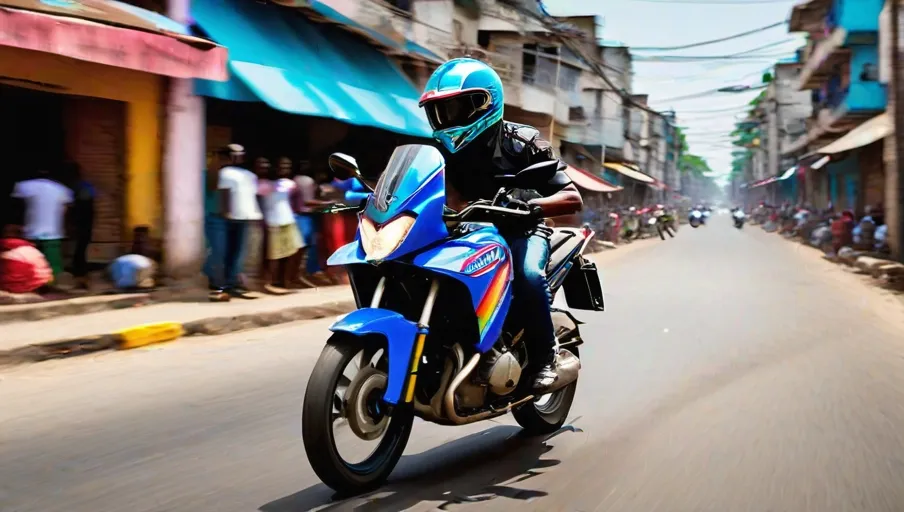
When flagging a motorcycle, it is important to wave your hand in a clear and assertive manner, signaling the driver to stop. To attract the attention of a motorcycle driver, it is crucial to stand by the side of the road, making yourself visible.
Avoid standing in the middle of the road or in a crowded area, as this may confuse the driver or make it difficult for them to notice you. Additionally, avoid waving your hand excessively or in a timid manner, as this may not catch the driver’s attention. Remember to maintain eye contact with the driver to ensure they see you.
Common mistakes to avoid when flagging a motorcycle include waving from a distance, as this may give the impression that you are not interested in a ride, and not clearly communicating your destination, which can lead to confusion and possible misunderstandings.
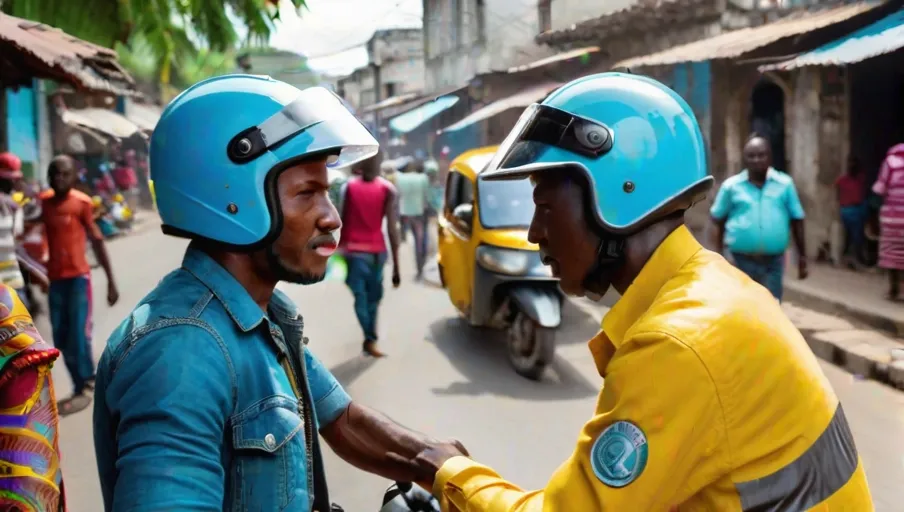
To maximize your savings, it is advisable to master the art of negotiating fares when flagging a motorcycle in Haiti. Understanding the cultural nuances of negotiating fares in Haiti is essential for getting the best deal. Here are some strategies for haggling with motorcycle taxi drivers:
| Strategies | Cultural Nuances |
|---|---|
| Start with a lower offer | Negotiating is expected |
| Be confident and firm | Confidence is respected in Haitian culture |
| Use local language phrases | Shows respect and understanding of the culture |
| Be willing to walk away | Demonstrates your determination to get a fair price |
| Build a rapport with the driver | Establishing a friendly connection can help in negotiations |

After negotiating a fair fare, confidently swing your right leg over the left side of the moto and securely hold onto the small bar at the back of the seat, ensuring a smooth and safe ride to your destination.
As thrilling as riding a moto in Haiti can be, it is crucial to prioritize safety when getting on one. To avoid accidents, always approach the moto from the left side, as getting on from the right side may result in burns from the muffler.
Additionally, make sure to use the pegs by the back wheel for your feet and hold onto the small bar at the back of the seat for stability.
Common mistakes to avoid include rushing onto the moto without assessing its condition and neglecting to wear a helmet.
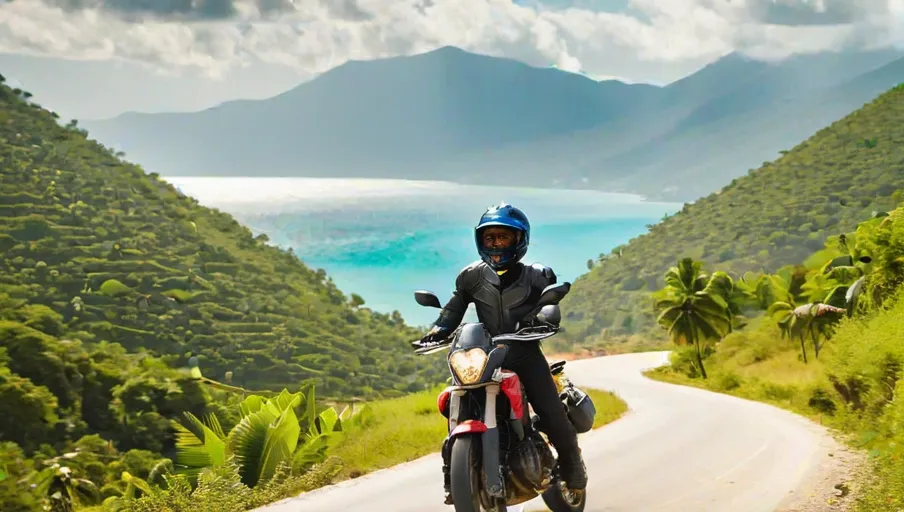
During your moto ride in Haiti, it is essential to maintain a firm grip on the small bar at the back of the seat for optimal stability. Building trust with moto drivers and staying safe on the moto are crucial aspects of enjoying a smooth and confident ride.
Here are three tips to enhance your moto experience in Haiti:
Communicate clearly: Establishing clear communication with your moto driver is key to building trust. Clearly communicate your destination, preferred route, and any specific instructions you may have. This will ensure a smooth and efficient ride.
Wear protective gear: Safety should always be a priority when riding a moto. Wear a helmet to protect your head and wear appropriate clothing to shield yourself from the elements and potential hazards on the road.
Observe road conditions: Stay vigilant and observe the road conditions while on the moto. Be aware of any potholes, uneven surfaces, or obstacles that may require adjustments in your position or speed. This will help you maintain balance and stability throughout the ride.
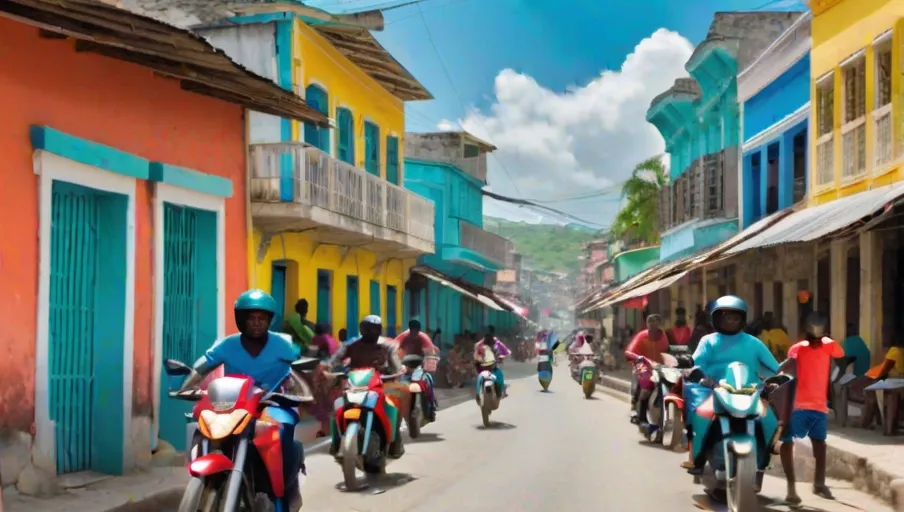
Navigating through Haiti’s vibrant streets on a moto offers an immersive experience of the country’s bustling atmosphere. Exploring the hidden gems of Haiti on a moto allows you to truly connect with the local culture and experience the country in a unique and authentic way.
Motos hold a significant cultural significance in Haiti, serving as a mode of transportation that is deeply ingrained in the daily lives of Haitians. Riding a moto not only provides a convenient way to get around, but it also allows you to witness the vibrant street life, interact with locals, and uncover the hidden treasures that Haiti has to offer.
From the colorful markets to the lively music, riding a moto allows you to embrace the freedom to explore and discover the rich cultural heritage of Haiti. So, hop on a moto and embark on an adventure to uncover the hidden gems of Haiti.
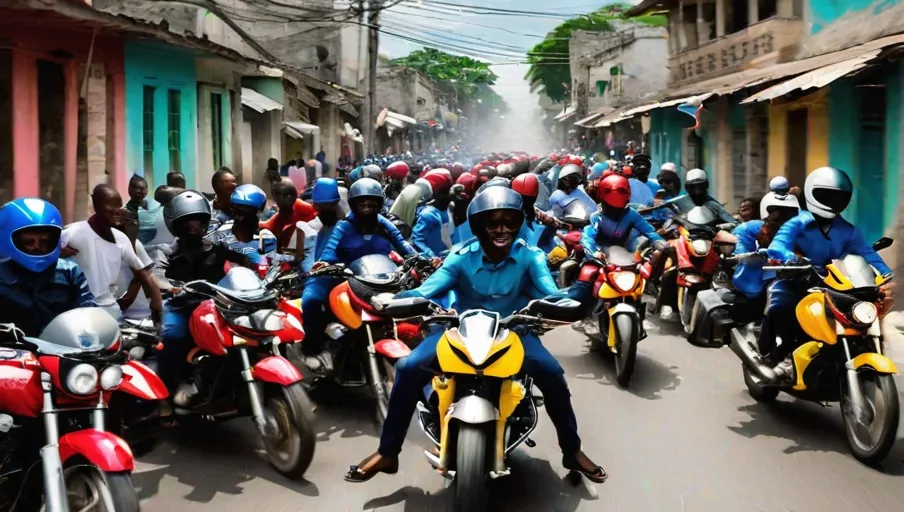
The moto, as the ultimate transportation option in Haiti, offers unparalleled convenience and flexibility for navigating the diverse terrain of the country. With its ability to maneuver through narrow streets and rough roads, the moto provides a thrilling and efficient way to travel in Haiti.
Safety precautions for riding a moto in Haiti:
– Always wear a helmet to protect your head in case of an accident.
– Hold on tightly to the driver or the back bar for stability.
– Be aware of your surroundings and anticipate potential hazards on the road.
Motos contribute significantly to the local economy in Haiti:
– Moto drivers earn a living by providing transportation services.
– The moto industry creates job opportunities for mechanics, helmet sellers, and fuel vendors.
– Motos support local businesses by facilitating the movement of goods and people, boosting economic activity.
Riding a moto in Haiti not only ensures convenience and flexibility but also supports the local economy, making it an ideal choice for transportation in the country.



